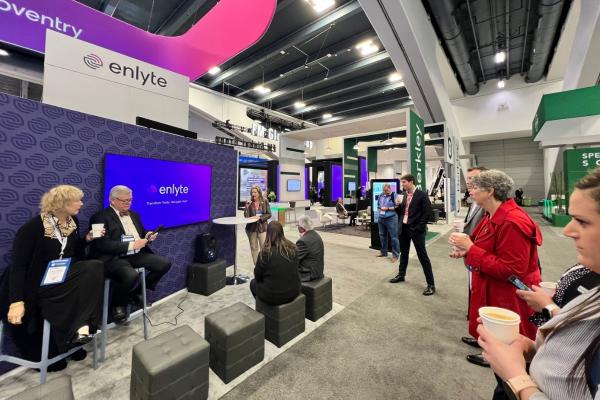Federal Regulatory and Legislative Trends Affecting Property & Casualty
There are many trends at the federal level affecting the property and casualty industry, and during a recent discussion, our regulatory compliance and government affairs teams addressed four important questions to provide some background and insights into their future impact for workers’ compensation and auto casualty.
What is the federal perspective on medical marijuana?
There is a lot of activity at the federal level in congress on cannabis. The House passed the MORE Act on April 1, 2022, but passing in the Senate is unlikely. This bill would eliminate penalties for growing, selling and transporting marijuana. It would also impose a federal tax. Similar to tobacco, taxes would be used for local programs such as fund loan programs for cannabis businesses and also set up a trust fund for businesses and neighborhoods that were impacted by the war on drugs.
Senator Chuck Schumer, the majority leader, has voiced support for marijuana legislation. While we haven't seen the White House address it yet, we know it is on their radar.
What activity is there at the federal level around telemedicine?
Telemedicine is probably one of the few industries that benefitted from the pandemic. It went from a footnote to front page and has been useful in patient care access to providers from a workers’ comp perspective. It forced consumers, providers and payers to look at patient care from a different perspective and elevated telemedicine to the national conversation. Prior to the pandemic, the Centers for Medicare & Medicaid Services (CMS) and Department of Health & Human Services (HHS) hadn't fully embraced telemedicine and had restrictive policies in place regarding when, how and where telemedicine services were to be provided. Generally, workers’ comp lags behind group health, but in this instance, the pandemic encouraged the use and advanced the technology. HHS took on blanket waivers to let people utilize telemedicine when appropriate.
Regulations that were in place prior to the pandemic were greatly relaxed post-pandemic. Many sections of emergency stays and interstate license waivers that allowed for telemedicine to be practiced more widely during COVID, have been renewed as a standard for operation. While Congress is still grappling with how to make this work in the post-pandemic or endemic world, for now, they are at minimum, using the language of the emergency legislation and continuing it.
To help facilitate post-pandemic plans, in early 2022, 330 prominent organizations including the HHS, the Healthcare Information and Management Systems Society (HIMSS), The American Telemedicine Association (ATA) and the Consumer Technology Association (CTA), to name a few, provided Congress a blueprint for what they believe the U.S. should do going forward. They had three main areas they stressed to help give Congress a roadmap for the future of telemedicine regulations, starting with authorizing the continuation of all current telehealth waivers through December 31, 2024. This would give HHS time to review the data and address any concerns about what utilization patterns should look like to make longer-term recommendations.
The recommendation also requires HHS to complete the evaluations regarding telehealth by the end of 2023. They are giving them almost two years to do their due diligence and make a determination so that in 2024, Congress can introduce permanent bipartisan legislation.
What is the expectation of the inpatient only list?
The inpatient only list has been used for approximately 20 years and is comprised of roughly 3,000 Current Procedural Terminology (CPT) medical codes (procedures/treatments) deemed appropriate by the CMS to be done only in an inpatient setting. These codes include procedures like orthopedic, cardiac procedures and other invasive procedures.
A few years ago, CMS proposed removing the inpatient only list, phasing it out over three years starting in 2021. This was proposed in the fall of 2020 to be effective January 1, 2021 and would occur in three phases. The first phase (for 2021) included the orthopedic-related codes, which can potentially affect procedures performed in workers’ compensation claims.
Of the roughly 3,000 codes, approximately 300 were taken off the inpatient only list for 2021, meaning that CMS would defer to clinical judgment as to whether those particular procedures would be performed in an inpatient or outpatient setting. Some could obviously only be done in an inpatient setting depending upon the individual patient; however, for others, it is a clinical judgment call, especially in the orthopedic arena.
During 2021, many ambulatory surgery centers saw the phase-out of the orthopedic codes as an opportunity to perform a number of procedures that had previously been prevented by Medicare in an outpatient setting. However, at the end of 2021, CMS reversed itself and put the orthopedic codes back on the inpatient only list for 2022, with the following exception: three CPT’s and associated anesthesia codes for reconstruction of ankle joints and shoulder joints, and lumbar spine fusions. This was done based upon feedback from the provider community.
As of January 1, 2022, all inpatient codes were put back on the inpatient only list, except the three mentioned above. CMS has indicated they will monitor the data and clinical information going forward to be more proactive about making changes to the inpatient only list as the data supports it. CMS has engaged in comments provided by providers for input into the inpatient only list. At Enlyte, we think it is likely we are going to see more carve outs and exemptions to reflect additional procedures that can be done safely in an outpatient setting.
What is happening on the federal side with mergers and acquisitions?
The Federal Trade Commission (FTC) is the organization that evaluates proposed mergers and acquisitions to determine what the market impact might be. If its impact would be too significant for a specific segment, they have the ability to investigate the merger and acquisition, which may include the involvement of the DOJ as the enforcement arm.
There has been extensive consolidation happening in the health care market, such as hospital corporations and individual hospitals buying ambulatory surgery centers and consolidation. This consolidation and grouping has affected Preferred Provider Organizations (PPOs) and network operations.
The FTC provides the opportunity to comment on a proposed merger if it’s in a market segment that could adversely impact your business. As we are focused on auto and workers’ comp mergers and acquisitions, we need to be mindful of, and as a network organization, are involved to ensure our clients are kept abreast of changes.
Looking Ahead
As we look ahead through the end of 2022 and beyond, Enlyte will be keeping a close watch on these federal trends as they progress to understand the impacts on the workers’ compensation and auto casualty industries.
For similar regulatory and compliance resources, visit Enlyte.com today.





